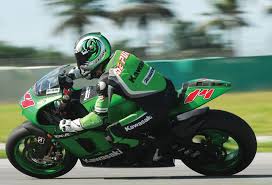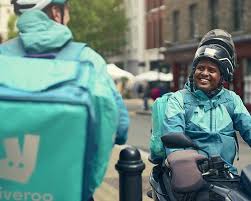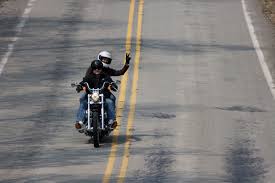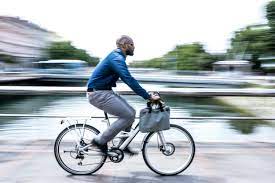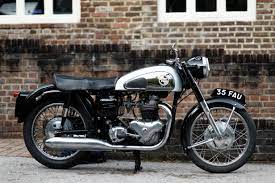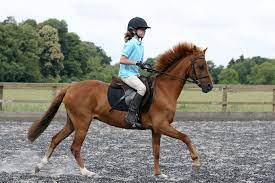
Riding: A Thrilling Journey of Freedom and Adventure
There is something undeniably exhilarating about riding a motorcycle. The feeling of freedom as the wind rushes past, the adrenaline coursing through your veins, and the sense of adventure that comes with exploring the open road. Riding is not just a mode of transportation; it is a way of life.
From the moment you mount your bike and twist the throttle, you are transported into a world where worries fade away, and all that matters is the road ahead. The hum of the engine becomes your soundtrack, and every twist and turn becomes an opportunity for excitement.
But riding is not just about speed and thrill; it’s also about connecting with nature. Whether you’re cruising along a coastal highway, meandering through scenic countryside roads, or tackling challenging mountain passes, riding allows you to immerse yourself in breathtaking landscapes. The sights, sounds, and smells become an integral part of the experience, making every ride a sensory adventure.
Riding also fosters a unique sense of camaraderie among fellow riders. There is an unspoken bond that forms when two motorcyclists pass each other on the road – a nod or wave that signifies shared passion and understanding. It’s this sense of community that makes riding even more special. From joining group rides to participating in events or simply striking up conversations at petrol stations, riders have a natural inclination to connect with one another.
Moreover, riding offers an escape from the monotony of everyday life. In a world filled with constant distractions and busyness, hopping on your bike allows you to disconnect from technology and immerse yourself in the present moment. It’s just you, your machine, and the road ahead – a meditative experience that clears your mind and rejuvenates your spirit.
However, it’s important to remember that riding comes with responsibility. Safety should always be paramount when embarking on two-wheeled adventures. Wearing protective gear, obeying traffic rules, and continuously honing your riding skills are crucial for a safe and enjoyable journey. By practicing responsible riding, we can ensure that the roads remain a welcoming place for all enthusiasts.
So, whether you’re a seasoned rider or someone who has always dreamt of experiencing the thrill of motorcycling, there is no better time to hop on a bike and embark on your own two-wheeled adventure. Discover the joy of riding – the freedom, the adrenaline, the connection with nature, and the sense of community. Let the road be your guide as you explore new horizons and create memories that will last a lifetime.
Riding is not just an activity; it’s a way of life. Embrace it, respect it, and let it take you on an incredible journey filled with freedom, adventure, and endless possibilities. So gear up, rev your engine, and let the road unfold before you – for there’s nothing quite like the sensation of riding.
9 Essential Tips for Safe Riding in the UK
- Always wear a helmet when riding.
- Make sure you have the correct safety equipment for your bike, such as lights and reflectors.
- Be aware of other road users and follow the Highway Code at all times.
- Keep your speed appropriate for the conditions and terrain you are riding on.
- Ensure that your bike is in good working order before setting out on a ride – check brakes, tyres, chain etc..
- Be visible by wearing bright or fluorescent clothing during the day and reflective clothing at night time or in poor light conditions
- Take care when cornering – slow down before entering a bend to avoid skidding or losing control of your bike
- Be alert to potential hazards like potholes, debris on the road surface etc..
- Stay hydrated during long rides – make sure that you take regular breaks to drink water or an energy drink
Always wear a helmet when riding.
Always Wear a Helmet When Riding: Your Safety Matters
When it comes to riding motorcycles, safety should always be the top priority. One of the most crucial safety measures you can take is to wear a helmet every time you hit the road. A helmet is not just a piece of gear; it is a lifeline that can protect you in case of an accident.
The importance of wearing a helmet cannot be overstated. It serves as your first line of defense, shielding your head from potential injuries and reducing the risk of severe trauma. In the event of a collision or fall, a helmet can absorb impact forces and provide vital protection to your brain and skull.
Not all helmets are created equal, so it’s essential to choose one that meets safety standards and fits properly. Look for helmets that are certified by reputable organizations and ensure they have features like impact-absorbing padding, sturdy chin straps, and proper ventilation. Remember, your helmet should fit snugly and comfortably on your head without being too loose or too tight.
Wearing a helmet not only protects you physically but also sets an example for other riders. By donning this essential piece of safety equipment, you demonstrate responsible riding behavior and encourage others to follow suit. It’s about creating a culture where safety is prioritized, ensuring that everyone on the road can enjoy their passion for motorcycling with peace of mind.
Some riders may argue that helmets restrict visibility or hinder their sense of freedom while riding. However, these concerns should never outweigh the potential risks involved. Modern helmets are designed with advanced technology to provide excellent visibility without compromising safety. Remember, it’s better to have some minor inconveniences than to face life-altering consequences due to an avoidable accident.
Whether you’re embarking on a short commute or planning an extended journey, wearing a helmet should be non-negotiable. Make it a habit – put on your helmet every time you swing your leg over the saddle. This simple act can make all the difference between a minor incident and a life-altering tragedy.
So, as you prepare for your next ride, remember this golden rule: always wear a helmet. Your safety is worth it, and by protecting yourself, you contribute to creating a safer riding environment for everyone. Let’s make responsible helmet use the norm and enjoy the thrill of riding while keeping ourselves well-protected on the road.
Make sure you have the correct safety equipment for your bike, such as lights and reflectors.
Make Sure You’re Equipped: Lights and Reflectors for Safe Riding
When it comes to riding a motorcycle, safety should always be a top priority. One crucial aspect of rider safety is ensuring that your bike is equipped with the correct safety equipment, including lights and reflectors. These simple yet essential components play a significant role in keeping you visible on the road and enhancing overall road safety.
Lights are not just for illuminating your path at night; they also serve as a vital means of communication with other road users. Your bike should have functioning headlights, taillights, and turn signals. These lights not only help you see and be seen but also indicate your intentions to fellow motorists, reducing the risk of accidents.
Properly functioning headlights ensure that you have clear visibility of the road ahead, especially during low-light conditions or when riding at night. They enable you to spot potential hazards early on, giving you more time to react and avoid any dangers.
Equally important are taillights, which alert drivers behind you to your presence on the road. By having bright and properly functioning taillights, you increase your visibility from behind, reducing the chances of rear-end collisions.
Turn signals are another crucial aspect of bike safety equipment. Signaling your intentions before making a turn or changing lanes allows other drivers to anticipate your movements and adjust their driving accordingly. This simple act can prevent confusion and potential accidents on the road.
In addition to lights, reflectors are equally important for enhancing visibility. Reflective materials strategically placed on different parts of your bike act as passive safety measures by reflecting light from other vehicles back towards them. This makes you more noticeable in low-light situations or when riding in areas with heavy traffic.
Reflectors can be found on various parts of your motorcycle, such as the front forks, rear fender, wheels, and even on your helmet or riding gear. These reflective surfaces bounce back light from headlights, making you more visible to other road users from different angles.
Ensuring that your bike is equipped with the correct safety equipment, including lights and reflectors, is a vital step towards promoting your own safety on the road. Regularly check these components to ensure they are in good working order, and replace any faulty bulbs or damaged reflectors promptly.
Remember, being visible to other motorists is crucial for preventing accidents and ensuring a safe riding experience. So, before you hit the road, take a moment to inspect your bike’s lights and reflectors. By doing so, you’ll not only be complying with legal requirements but also taking an active step towards protecting yourself and others while enjoying the freedom of riding.
Be aware of other road users and follow the Highway Code at all times.
Be Aware of Other Road Users: Ensuring a Safe and Harmonious Ride
When it comes to riding a motorcycle, one of the most crucial tips to remember is to be aware of other road users. Sharing the road with cars, trucks, cyclists, and pedestrians requires vigilance and a keen sense of observation. By being mindful of your surroundings and following the Highway Code at all times, you can enhance your safety on the road and contribute to a harmonious coexistence with fellow road users.
First and foremost, maintaining awareness means staying alert to the movements and intentions of others. Always anticipate potential hazards by scanning the road ahead, checking mirrors regularly, and keeping an eye on blind spots. This heightened awareness allows you to react promptly to any unexpected situations that may arise.
Additionally, following the Highway Code is essential for safe riding. Familiarize yourself with its rules and regulations specific to motorcycles. Adhering to speed limits, using indicators when changing lanes or turning, and giving appropriate signals are all examples of responsible riding behaviour that promote safety for yourself and others.
Remember that visibility is key in ensuring other road users are aware of your presence. Use your headlights during daylight hours for added visibility, especially in adverse weather conditions or low-light situations. Wearing reflective clothing or accessories can also increase your visibility to others on the road.
Another important aspect of being aware of other road users is practicing patience and respect. Treat fellow motorists with courtesy by giving them ample space when overtaking or merging lanes. Stay calm in heavy traffic situations or when encountering drivers who may not be as considerate as they should be. By maintaining composure and avoiding aggressive behaviour, you contribute to a more peaceful environment for everyone on the road.
Lastly, ongoing education and improvement are essential for all riders. Consider taking advanced riding courses or refresher sessions periodically to enhance your skills and knowledge. These courses can provide valuable insights into defensive riding techniques and strategies for handling challenging situations.
In conclusion, being aware of other road users and following the Highway Code at all times are fundamental principles for safe and enjoyable riding. By remaining vigilant, respecting traffic laws, and fostering a cooperative attitude towards fellow road users, you contribute to a positive riding experience for yourself and others. So, gear up, stay alert, and enjoy the open road while keeping safety at the forefront of your mind.
Keep your speed appropriate for the conditions and terrain you are riding on.
Riding Tip: Adjust Your Speed to the Conditions and Terrain
When it comes to riding a motorcycle, one of the most crucial tips for ensuring your safety is to keep your speed appropriate for the conditions and terrain you are riding on. While it may be tempting to push the limits and feel the rush of speed, it’s essential to prioritize caution and adapt your pace accordingly.
Different road conditions demand different speeds. Whether you’re riding on a smooth highway, navigating through winding country roads, or encountering challenging weather conditions, adjusting your speed is paramount. Riding too fast can compromise your control over the bike and increase the risk of accidents.
In wet or slippery conditions, such as during rainfall or after a downpour, reducing your speed is crucial. The road surface becomes more treacherous, with decreased traction and increased chances of skidding. By slowing down, you allow yourself more time to react to unexpected situations and maintain better control over your bike.
Similarly, when riding on uneven or gravelly surfaces, it’s essential to moderate your speed. These terrains can be unpredictable and affect your bike’s stability. By maintaining a lower speed, you enhance your ability to navigate through these challenging surfaces without compromising safety.
Another factor that influences appropriate speed is visibility. In low-light conditions or at night, when visibility is reduced, it’s advisable to ride at a slower pace. This allows you ample time to spot potential hazards like pedestrians or animals crossing the road.
Furthermore, when riding in urban areas with heavy traffic or congested streets, adjusting your speed becomes even more critical. Slowing down gives you more time to react to sudden stops or changes in traffic patterns around you.
Remember that keeping an appropriate speed isn’t just about safety; it also contributes to overall enjoyment of the ride. By matching your pace with the conditions and terrain, you can fully appreciate the surroundings without feeling rushed or overwhelmed.
So next time you hit the road on your motorcycle, make it a habit to assess the conditions and terrain you’re riding on and adjust your speed accordingly. Prioritize safety, maintain control, and embrace the journey with a mindful approach. By keeping your speed appropriate for the conditions, you’ll enhance your riding experience and ensure a safer adventure on two wheels.
Ensure that your bike is in good working order before setting out on a ride – check brakes, tyres, chain etc..
Ensure Your Bike is Ready for the Ride: A Crucial Tip for Every Rider
Before embarking on any motorcycle adventure, one of the most important steps you can take is to ensure that your bike is in good working order. Checking key components such as brakes, tyres, and the chain is not only a matter of safety but also ensures a smooth and enjoyable ride.
First and foremost, inspecting your brakes is essential. Well-functioning brakes are crucial for maintaining control and stopping power when needed. Check the brake pads for wear and tear, ensuring they have enough thickness to provide effective braking. Additionally, examine the brake lines for any signs of leakage or damage. If you notice any issues, it’s best to address them before hitting the road.
Next on the checklist are your tyres. They are your connection to the road, so it’s crucial to ensure they are in optimal condition. Check the tyre pressure using a reliable gauge and adjust as necessary according to manufacturer recommendations. Inspect for any signs of wear or damage, such as cracks or bulges. Additionally, check the tread depth to ensure it meets legal requirements and provides adequate grip on various road surfaces.
Another important component to inspect is the chain (if applicable). A well-maintained chain ensures smooth power transfer from the engine to the rear wheel. Make sure it is properly tensioned; neither too loose nor too tight. Lubricate it regularly with a suitable chain lubricant to prevent excessive wear and ensure smooth operation.
Additionally, take a moment to check other vital aspects of your bike’s functionality. Inspect lights, indicators, and mirrors to ensure they are all working correctly – visibility is key for both your safety and that of others on the road. Don’t forget to verify that your horn functions properly too.
Lastly, it’s always wise to perform routine maintenance checks recommended by your bike’s manufacturer such as oil changes and filter replacements at regular intervals. Following the manufacturer’s guidelines will help keep your bike running smoothly and reduce the risk of unexpected breakdowns.
By taking the time to ensure your bike is in good working order before setting out on a ride, you are prioritizing safety and setting yourself up for an enjoyable journey. Regular maintenance and inspections not only enhance your riding experience but also contribute to extending the lifespan of your motorcycle.
Remember, as a responsible rider, it’s crucial to prioritize safety at all times. So, before you embark on your next adventure, take a few moments to inspect and maintain your bike – checking brakes, tyres, chain, and other key components. This simple act can make all the difference in ensuring a safe and enjoyable ride.
Be visible by wearing bright or fluorescent clothing during the day and reflective clothing at night time or in poor light conditions
Enhance Your Safety: Be Visible on the Road
When it comes to riding a motorcycle, safety should always be a top priority. One simple yet effective tip to ensure your visibility on the road is to wear bright or fluorescent clothing during the day and reflective clothing at night or in poor light conditions.
Motorcycles are smaller and less conspicuous than other vehicles on the road, making it crucial for riders to take proactive measures to increase their visibility. By choosing clothing in vibrant colours like yellow, orange, or neon green, you can significantly enhance your presence on the road during daylight hours. These bright hues catch the attention of other motorists, making it easier for them to spot you from a distance.
As the sun sets and darkness falls, visibility becomes even more critical. This is where reflective clothing comes into play. Clothing with reflective strips or panels reflects light back towards its source, making you visible to drivers even in low light conditions. When headlights hit these reflective surfaces, they create a glowing effect that alerts others of your presence.
Wearing bright or fluorescent clothing during the day and switching to reflective gear at night provides an added layer of protection for riders. It helps reduce the chances of accidents caused by other drivers failing to see motorcycles in their vicinity.
In addition to wearing visible clothing, it’s also essential to ensure that your motorcycle itself is equipped with proper lighting. Check that your headlights, taillights, brake lights, and turn signals are all functioning correctly. Regularly clean and maintain these lights so that they provide maximum visibility when needed.
Remember that being visible goes beyond just what you wear; it also involves maintaining a defensive riding style and staying alert on the road. Constantly scan your surroundings for potential hazards and make eye contact with other drivers whenever possible.
By taking these precautions and being proactive about increasing your visibility on the road, you significantly reduce the risk of accidents caused by others not seeing you. So next time you gear up for a ride, make sure to don your bright or fluorescent clothing during the day and switch to reflective gear when riding at night or in poor light conditions. Your safety is worth it, and being visible can make all the difference on your two-wheeled adventures.
Take care when cornering – slow down before entering a bend to avoid skidding or losing control of your bike
Cornering: Mastering the Art of Control and Safety
When it comes to riding a motorcycle, one of the most crucial skills to master is cornering. The way you navigate bends can greatly impact your safety and control on the road. To ensure a smooth and secure ride, it’s essential to take care when cornering by slowing down before entering a bend.
As you approach a bend, it’s important to assess the road conditions, visibility, and potential hazards. By slowing down before entering the corner, you give yourself more time to react and adjust your speed accordingly. This simple precaution can prevent skidding or losing control of your bike, which are common risks associated with excessive speed in corners.
Slowing down allows you to maintain better traction between your tires and the road surface. It reduces the chances of sliding or drifting outwards due to centrifugal force. By maintaining control through a slower speed, you can confidently negotiate the bend while keeping your bike stable.
Another benefit of slowing down before entering a bend is that it gives you more time to observe and anticipate any potential obstacles or hazards within the corner. This extra time allows you to make necessary adjustments in your riding line or position on the road to avoid any sudden surprises.
It’s worth noting that proper body positioning also plays a significant role in cornering safely. As you slow down before entering a bend, shift your weight towards the inside of the turn by leaning into it slightly. This technique helps maintain balance and stability while ensuring better control over your bike throughout the corner.
Remember, taking care when cornering is not about sacrificing fun or excitement; it’s about prioritizing safety without compromising on enjoyment. By mastering this skill, you can enhance your riding experience by confidently navigating bends with precision and control.
So next time you find yourself approaching a bend, remember to slow down before entering it. Give yourself ample time to assess the road conditions, adjust your speed accordingly, and maintain control throughout the corner. By doing so, you’ll minimize the risk of skidding or losing control of your bike, ensuring a safe and enjoyable ride every time.
Take care when cornering – it’s a small tip that can make a big difference in your riding experience. Embrace the art of control and safety, and let each bend become an opportunity to showcase your mastery on two wheels.
Be alert to potential hazards like potholes, debris on the road surface etc..
Riding Tip: Stay Vigilant and Navigate Potential Hazards on the Road
When it comes to riding a motorcycle, being alert and aware of your surroundings is crucial for a safe and enjoyable journey. One important aspect of staying vigilant is being mindful of potential hazards that may arise on the road, such as potholes, debris, or other obstacles.
Potholes can be a common occurrence on many roads, and they can pose a significant risk to motorcyclists. These sudden disruptions in the pavement can cause instability and potential loss of control. Therefore, it’s essential to scan the road ahead and keep an eye out for any signs of potholes. By anticipating their presence, you can adjust your speed and position to navigate around them safely.
Debris on the road surface is another hazard that riders need to be aware of. It can range from loose gravel or sand to fallen branches or even discarded objects. These obstacles can reduce traction and increase the chances of accidents. Paying attention to the road conditions and scanning for any debris will allow you to react promptly by adjusting your path or speed accordingly.
In addition to potholes and debris, there are other potential hazards that riders should remain alert for, such as oil spills, wet surfaces after rain, or uneven road markings. By maintaining focus on the road ahead and constantly assessing your environment, you’ll be better prepared to handle unexpected situations.
To enhance your ability to spot potential hazards effectively, it’s important to develop good observation skills while riding. This means regularly checking your mirrors, scanning intersections before proceeding, and keeping an eye on vehicles around you. By staying alert and attentive at all times, you’ll have more time to react if something unexpected arises.
Remember that prevention is key when it comes to navigating potential hazards on the road while riding. Being proactive in identifying and avoiding these obstacles will help ensure a safer journey for both yourself and others sharing the road.
So, the next time you hop on your motorcycle, make it a habit to stay vigilant and be alert to potential hazards. By doing so, you’ll be better equipped to anticipate and navigate around obstacles like potholes, debris, or any other road hazards that may come your way. Stay safe, enjoy the ride, and keep exploring the world of motorcycling with confidence!
Stay hydrated during long rides – make sure that you take regular breaks to drink water or an energy drink
Stay Hydrated: Essential for Long Rides
When embarking on long rides, whether it’s a scenic countryside tour or an adventurous cross-country journey, it’s crucial to prioritize your hydration. Staying hydrated not only enhances your riding experience but also plays a vital role in maintaining your overall well-being.
As you cruise along the open road, the wind rushing past can cause dehydration to set in faster than you might realize. Sweating, combined with the constant exposure to the elements, can lead to fluid loss and potential fatigue. This is why taking regular breaks to drink water or an energy drink is essential.
Hydration is key for maintaining optimal physical and mental performance during long rides. Water acts as a natural coolant for your body, regulating your temperature and preventing overheating. It also helps lubricate your joints and muscles, reducing the risk of cramps and discomfort.
An energy drink can be beneficial during prolonged rides as it replenishes electrolytes lost through sweat. These drinks often contain essential minerals like sodium, potassium, and magnesium that help maintain proper muscle function and prevent dehydration-related issues.
Remember that thirst alone is not always an accurate indicator of your body’s hydration levels. By the time you feel thirsty, you may already be dehydrated. Therefore, it’s important to establish a routine of taking regular breaks to hydrate yourself throughout your journey.
During these breaks, find a safe spot to pull over and stretch your legs while replenishing your fluids. Keep a water bottle or energy drink within reach for easy access whenever needed. It’s recommended to sip small amounts frequently rather than chugging large quantities all at once.
Additionally, consider planning rest stops near facilities where you can refill your water supplies or purchase beverages if needed. This way, you can ensure that you have access to clean drinking water throughout your ride.
Staying hydrated not only keeps you physically refreshed but also helps maintain mental clarity and focus while riding. Dehydration can lead to fatigue, dizziness, and reduced cognitive function – factors that can compromise your safety on the road.
So, before you embark on your next long ride, make sure to prioritize hydration. Take regular breaks to drink water or an energy drink to keep your body fueled and your mind sharp. By staying properly hydrated, you’ll be able to enjoy the journey to its fullest while ensuring a safe and enjoyable riding experience.
Remember: Stay hydrated, stay safe, and let the road be your guide as you embark on memorable adventures on two wheels.


